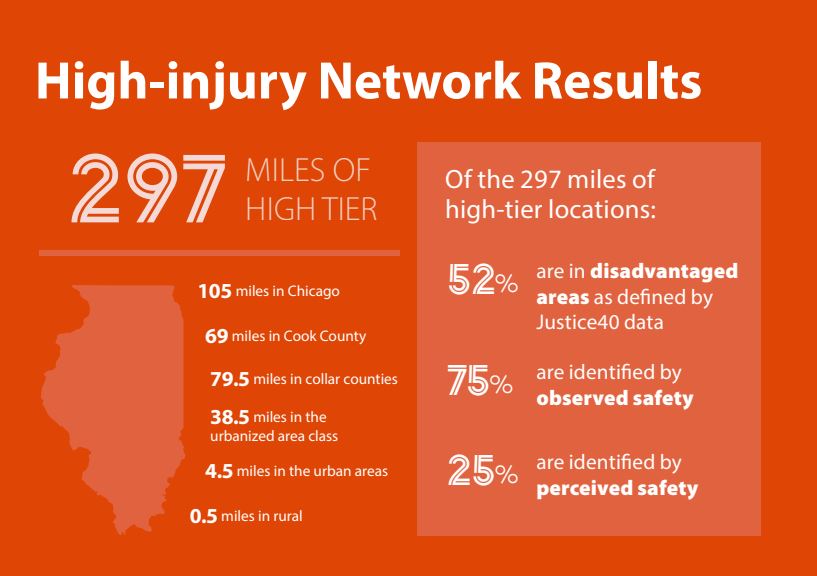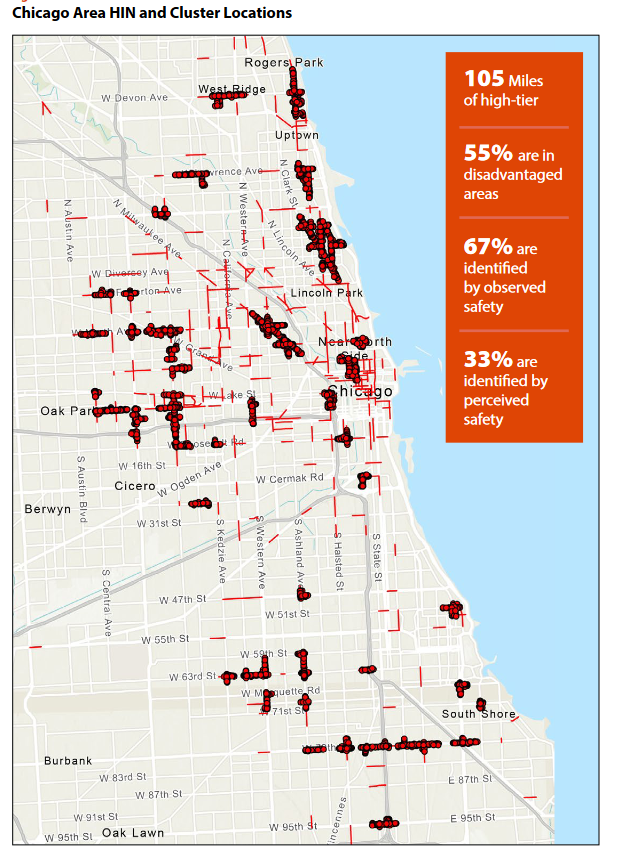Towards the end of 2023, the Illinois Department of Transportation (IDOT) released its 2023 Vulnerable Road User (VRU) Safety Assessment for the state.
As mandated by the Bipartisan Infrastructure Law, the assessment identifies safety trends, policies, and strategies to enhance the safety of pedestrians, bicyclists, and other vulnerable road users.
The following are highlights from the report:
SAFETY TRENDS
IDOT compiled and analyzed safety data spanning from 2005 to 2022, revealing statewide and local trends.
In Illinois, vulnerable road users accounted for 18 percent of total roadway fatalities. Pedestrians made up the largest proportion of VRU fatalities and serious injuries followed by bicyclists. The Chicagoland region, particularly Chicago, experienced the highest number of VRU crashes per mile of roadway.
Notably, the report highlights a decrease in serious injuries across the state, but an alarming increase in fatalities, with 231 reported in 2022, emphasizing the urgency of targeted interventions.
In the past five years, fatalities among people walking have increased 18 percent and fatalities among people biking have increased 46 percent.
COMMON FACTORS IN CRASHES
The report also identified common factors in vulnerable road user crashes.
In our region, SUVs/pickups, right and left turning vehicles, and aggressive driving were involved in more than 15 percent of crashes.
A high percentage of crashes occurred on roadways with speed limits above 30 mph, arterial roads, commercial areas, and at intersections.
Children, teenagers, and younger adults were disproportionately involved in VRU crashes. Despite representing only 26 percent of the population in Illinois, vulnerable road users under the age of 21 were involved in nearly 40 percent of bicycle crashes and 30 percent of pedestrian crashes.

‘HIGH-INJURY NETWORK’ & EQUITY CONSIDERATIONS
To prioritize and address safety concerns comprehensively, IDOT identified 297 miles of roadway as part of its high-tier “High-Injury Network” (HIN). The map below shows 105 miles of the high-tier injury network identified in the Chicago area.
The network was developed by analyzing locations with observed or perceived safety issues. Locations with observed safety issues are those where crashes have been reported, and locations with perceived safety issues are popular areas typically avoided by people traveling on foot or by bike.
Throughout the report, IDOT acknowledges that historically underserved communities bear a disproportionate burden of VRU safety issues. Equity was incorporated into the HIN analysis and the overall report affirms IDOT’s intention to level the playing field for these communities.

STRATEGIES FOR IMPLEMENTATION
Using a Safe System Approach (SSA), IDOT recognizes that humans are fallible and can make mistakes. The agency aims to ensure that those mistakes do not result in fatal or serious injuries through a menu of strategies and roadway treatments.
Strategies to improve VRU safety included traffic calming, enhanced crosswalks, improved lighting, speed management, and the separation of vehicles from pedestrians and bicyclists through paths, sidewalks, bump outs, medians, and refuge islands.
The vision outlined in IDOT’s VRU Assessment charts a course towards safer roadways for all.
Later this winter, an interactive online tool will be released to the public to help individuals dig into specific details on local safety trends, crash factors, the High-Injury Network, and implementation strategies. We will be sure to provide an update when the tool is released.
As stakeholders, advocates, and community members, let’s rally behind IDOT’s commitment for VRU safety and hold them accountable for transforming transportation safety and ensuring a future where roadways are truly inclusive and safe for everyone.

